The greatest obstacle to spiritual development is . . . not what you might think. Various religions and spiritual pathways talk about our disturbed emotions, our anger, our anxieties, our past actions. Others dwell on our persistent clinging or attachment to various aspects of our outer world and inner experiences. Still others cite our self-centeredness, our grasping at a self or so-called “ego-clinging.” Each of these is valid in relation to different stages and aspects of the path. And in every case we could also debate their value or relevance, or the misunderstandings that arise with regard any of these complex issues. Numerous books are available that focus on one or another of these factors, but they all neglect the major obstacle to our progress. Indeed most of these factors that contribute to our suffering are based on a still deeper cause. Like the mythical many-headed Hydra, it can manifest in hundreds of ways, yet if you cut off one head, 10 more grow in its place. That overarching cause is simply this: trauma. Before we can either reject or accept such a notion, we need to define what trauma is, beyond the concepts offered by either the popular press or clinical psychotherapy. And although the extensive literature and methods of working with PTSD and trauma are well-developed, diverse, and generally effective, for our spiritual development the impact of trauma is different, as are the solutions.
What is a trauma?
For our purpose, a trauma is anything whatsoever that disrupts our normal physiology or homeostasis on the level of body, mind, or spirit—and leaves a chronic, seemingly permanent and distorting imprint on our optimal bioenergetic structure. There is no need in this short article to present a full catalog of the toxic impacts that we are subject to all day long. These are inflicted on our biological, psychological, and energetic being in the form of internal wastes and oxidative by-products, thousands of toxins in our food and water and atmosphere. Without dividing them into categories, we see a gigantic grab bag of genetic predispositions, heavy metals, drugs, viruses and other microbes, plastics, stress, loss and grief, fear, worry, abuse, and on and on. From the more complex spiritual perspective, there are astrological forces, ill-will and “curses,” non-human entities, and of course the effects of our own actions, i.e. karma. Karma simply means cause and effect and so it is not just “what you did” but what was done to you!
None of the above are necessarily traumatic if the body-mind-spirit fends them off and recovers perfectly—or at least almost so. But intense shocks create a semi-permanent record that results in dysfunction along the traumatic spectrum. Rather than a temporary impact it becomes a perpetuating, recurring, usually hidden and resistant pattern or program that will sabotage our health, wealth, well-being, or sanity whenever it is triggered or when we become weak enough that one or another such trauma rears its proverbial ugly head.
Trauma effects
Trauma can have a wide range of effects and symptoms, as well as extensive metabolic, neurological, immunological, and psychological effects. However, none of these are specific to trauma alone and so the real key is understanding what trauma means for the bioenergetic body, for the intricate web of electrical, magnetic, and photonic forces and fields that make up our subtle body.
Our physical form itself functions as a liquid-crystal matrix, with the fourth, magnetic stage of water being an important part of our composition. Our connective tissue matrix and PVS (primary vascular system) is interwoven through every organ and tissue. Beyond this exquisite network of minute vessels and microscopic collagen, we also have an energy body. Just as there is a network of ever-finer arteries and capillaries, and ever-more-subtle branches of nerve fibers, there is a highly structured energy field. Imagine a polished diamond or some other magnificent gem with billions of facets, intersecting and overlapping in perfect symmetry, reflecting photons carrying complex qualia of information. This network is the formative pattern upon which our physical organism is built. All structure and all function follows these invisible lines of force.
Buddhist and Hindu texts describe the body as having 84,000 energy channels or nadi or tsa. But this is certainly a figurative number, or represents only the more coarse channels. They have been detailed in Chinese medicine and Daoist alchemy, in Buddhist Vajrayana and Hindu Shaivite and yogic practice. But for now we only need the broadest of brushes to understand the role that trauma plays in disrupting or damaging the energy body.
Traumatic channels
Trauma exists within our body, tissues, cells, and molecules. On a physical level there is now tremendous information about what happens within the vascular system and how blockages and distortion, or a lack or excess of angiogenesis (blood vessel building capacity) accompanies or causes disease. Such disruptions also occur within the complex web of energies, the vibrating strings of light and organized fields that belong to each unique organ and tissue. These take the form of weakened or broken lines of forces, distorted or expanded “bubbles” within the bodyfield, or thickened, tangled, or blocked energetic channels. The perfect symmetry and organization of our bioenergetic structure becomes a tangled skein. To make matters worse, these areas, large and small, then form a defensive field, not unlike the physical scabs and scars with which we are so familiar. They become walled off and inaccessible, “safely” stowed away but also becoming a ticking time bomb.
While the energy body will reflect the impacts of long-held traumas, these impacts also live in memory. The location of memory may be disputed by science, but without question it exists within the matrix of the mind (something science also finds beyond its materialistic grasp). These various disturbed and distorted areas, whether deficient or congested, hold the same traumatic memories of the overwhelming impact that we could not resolve and could not eliminate. It is stuck there, adding to the load of an ever-heavier burden of life experience that beats us down.
Trauma repair
The fact that trauma is stored in the physical organism, the energy body, and the mind is also our key to resolving these points of dysfunction. In mainstream Vajrayana we have already have many of these tools, although for cultural reasons they have not been used to full effect. Vajrasattva practice, for example, is used to cleanse the body and psyche in preparation for deeper meditations. But while this kind of practice is used for “karmic purification,” it also can and should be used to specifically target physical and psychological trauma. Some would object that this is a form of therapy and not the Dharma, and that the two should not be conflated. It is a valid point, except that in time one finds that the two are intimately and irrevocably intertwined. The only thing that makes something therapeutic, as opposed to spiritual practice, is one’s orientation. Is this about making me a better, healthier, saner person or moving me toward enlightenment? For me, I see these both as valid goals for a creating better world for all of us, call it what you will.
In my own experience, the Five Elemental connection is the crucial missing component, even in this practice. Using the Vajrasattvas of the five colors, or using the Elements, their colors and sounds, in a variety of ways allows one to specifically target and encapsulate the trauma, depending on which Element—or sub-elemental combination—suffered the original damage. This of course presumes a thorough understanding of the Five Elements in both their healthy and maladaptive forms.
Additionally, Western psychological methods such as HDMR (Eye Movement Desensitization and Reprocessing) and HMR (Holographic Memory Resolution) are very useful and effective methods. Integrated with Vajrayana and bioenergetic models, they have the potential to be that much more profound in their effect.
Trauma defense
While we are clearing up past impacts of every description, we may also be busy accumulating fresh trauma! The solution seems straightforward: protect oneself. But how to most effectively ward off these attacks, large and small? Fortunately Vajrayana again is replete with defensive methods and, in fact, a good deal of the daily practice of a tantric Buddhist adept is spent in this way. Daily water offerings, smoke offerings, morning Tara practice and evening protector practice are largely dedicated to preventing harm to one’s health, possessions, sangha, spiritual practice, and the Buddhadharma in general. Also, the extensive and widespread practice of Chöd is a penultimate way of clearing “incoming karma” before it manifests in serious obstacles and difficulties. Then again, merely holding to the identity of the yidam or meditational deity archetype provides ongoing protection, as we discard our habitual identity, the proverbial “magnet of suffering.”
The trauma-resistant form
Inner work of another sort is also necessary and highly effective. That takes the form of building up one’s Five-Element structure, area by area, noting where there are weakness and filling in the gaps. The integrity of our five-element matrix is our greatest asset and greatest bulwark against forces of entropy and decay. They are formative patterns of meaning and intelligence that provide a scaffold for bio-photonic light, electricity, magnetism, and eventually a vibrating container built of molecules, cells, and sinews. The Elements should be our first concern in the morning and our last thought at night, providing diurnal protection. If one can achieve full Mahamudra pure light states, do that. But the Elements will still be our guide through the mundane world of apparitions and confused and wandering sentient beings.
The trauma world
Without question, we live in one of the most turbulent times in history and certainly the most disruptive in this author’s long life. This means that the traumatic impacts, physical, mental, and spiritual, are coming hard and fast, with no certain end in sight—that itself being a major stress. Working daily to clear out “hits” of the day is more essential than ever, while getting at a lifetime’s backlog that act as karmic impediments to a life wholly lived. Every liability can become an asset. The Vajrayanist knows well that we are here to transform lead into gold, poison into nectar, confused bumbling into sacred living. We just need to put it into practice what we already know and let it deeply enter our essence.
References
Hershoff, Asa. 2021. 5 Element Energy Healing: The Anceint Key To Health, Vitality And Wholeness Thorugh Life’s Formative Forces Of Earth, Water, Fire, Air & Space. Burbank: Healing Wisdom Books.
Hershoff, Asa. 2021. Elemental Psychology: The Ancient Key to Awakening Your Inner Strength, Dominion, Creativity, Wisdom & Open Heart. Burbank: Healing Wisdom Books.
Babbel. Susanne. 2018. Heal The Body, Heal The Mind: A Somatic Approach To Moving Beyond Trauma. Oakland: New Harbinger Publications.
Chia, Mantak and Doug Hilton. 2017. EMDR and the Universal Healing Tao: An Energy Psychology Approach to Overcoming Emotional Trauma. Rochester: Inner Traditions.
Emerson, David and Elizabeth Hopper. 2011. Overcoming Trauma Through Yoga: Reclaiming Your Body . Berkeley: North Atlantic Books
Fireman, John and Ann Gila. The Primal Wound: A Transpersonal View of Trauma, Addiction, and Growth. Albany, NY: SUNY Press.
Gyatrul Rinpoche and Trinley Norbu. 1978. Commentaries on the Practice of Vajrasattva. Ashland: Mirror of Wisdom Publications.
Kalsched, Donald. 1996. The Inner World Of Trauma: Archetypal Defenses of the Personal Spirit. New York: Routledge.
Levine, Peter A. 1993. Waking the Tiger: Healing Trauma, The Innate Capacity to Transform Overwhelming Experiences. Berkeley: North Atlantic Books.
Shapiro, Francine. 2012. Getting Past Your Past: Take Control of Your Life with Self-help Techniques from EMDR Therapy. New York: Rodale Press.
Van der Kolk, Bessel. 2014. The Body Keeps the Score: Brain, Mind, and Body in the Healing of Trauma. New York: Viking Press.
Wolynn, Mark. 2016. It Didn’t Start with You: How Inherited Family Trauma Shapes Who We Are and How to End the Cycle. New York: Viking Press.
Yeshe, Lama Thubten. 2004. Becoming Vajrasattva: The Tantric Path Of Purification. Somerville: Wisdom Publications.
See more
Related features from Buddhistdoor Global
Elemental Protection in Troubling Times
Resiliency: Releasing Trauma through Embodied Art
Self, Other, and the Spaces Between: Behind the Lens with Niçoise Photographer Fiorenza Menini
Accumulating Trash: How to Keep Our Minds From Becoming a Garbage Dump
Spiritual Bypassing and the Dangers of Unresolved Emotional Wounds



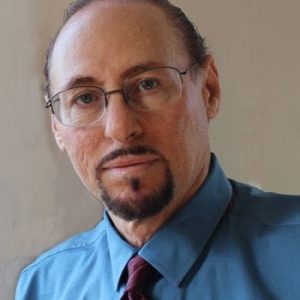




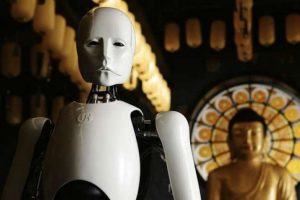

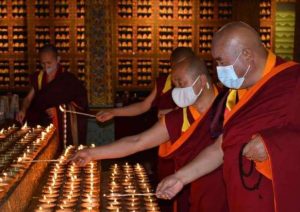

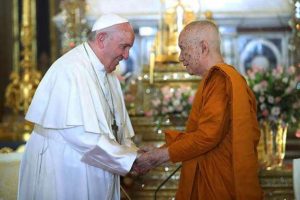
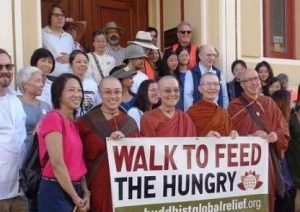
Thank you for these amazing articles. I am new to learning about these practices and would love to hear what would be the best starting point for a beginner to try to rid trauma from the body. I believe you went over ways in your article, but it is still too soon for me to fully understand. Thank you again for all of the articles you write.